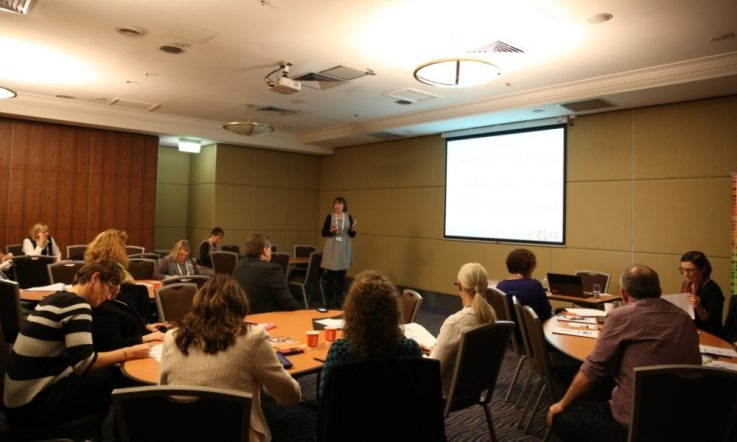Like reading for pleasure, an enjoyment of writing has been linked to higher student achievement.
Unfortunately, latest UK data show that while children and young people's enjoyment of reading has been increasing in recent years, enjoyment of writing is heading in the opposite direction. So much so that the National Literacy Trust is now calling for a focus on writing for enjoyment in schools.
Results of its sixth annual literacy survey of more than 32 000 eight- to 18-year-olds, released this month, show 44.8 per cent said they enjoy writing very much or quite a lot in 2015 – down from 49.3 per cent the previous year and 10 per cent lower than the 2015 figure for enjoyment of reading.
The UK charity says that's a big problem, because children and young people who enjoy writing very much are seven times more likely to write above the level expected for their age compared with those who don't enjoy writing at all (50.3 per cent versus 7.2 per cent).
Breaking down the findings by gender, enjoyment levels for boys and girls in the 2015 results are 36.8 per cent and 51.9 per cent, respectively.
There are also big differences between age groups – younger children enjoy writing more than older children. In the Key Stage 2 age bracket (eight to 11), 64.1 per cent of survey participants said they enjoy writing very much or quite a lot. By Key Stage 3 (11 to 14) that figure takes a massive hit, dropping to 41.1 per cent, and by Key Stage 4 (students aged 14 to 16) it dips to just 31.5 per cent.
The annual survey also explores children and young people's writing frequency. Again, this has been linked to higher student achievement with the Trust reporting that ‘students who write outside school daily are five times more likely to have levels of writing above those expected for their age, compared with those who never write outside the classroom (30.9 per cent versus 5.8 per cent)'.
Just over one fifth of survey participants (20.7 per cent) said they write something daily outside the classroom that is not for school, down from 27.2 per cent in 2014. And, by ‘writing something daily' the charity doesn't just mean traditional pen and paper – formats include text messages, social network posts, blogs, coding, lyrics, emails, poems, fiction and posters. While daily writing levels have dropped, daily reading levels have increased from 28.4 per cent in 2012 to 43 per cent in 2015.
Children and young people were also asked about their attitudes to writing and these findings are also detailed in the Trust's new report (Clark, 2016). Returning to the question of enjoyment, 78.5 per cent agreed that ‘writing is more fun when you can choose the topic'. Also telling is the fact that only around one third of participants (36.1 per cent) agreed that ‘writing is cool' and 14.1 per cent even went as far to agree that they would be embarrassed if friends saw them write.
References
Clark, C. (2016). Children's and Young People's Writing in 2015. Findings from the National Literacy Trust's annual literacy survey. London: National Literacy Trust.
How often do you allow students to choose their own topic when they’re writing?
The Trust’s survey found only 36 per cent of students think writing is ‘cool’ – why do you think this might be?
Several studies have found that writing for an authentic audience can increase student motivation and engagement. How can you connect your students to a real audience outside the classroom?



